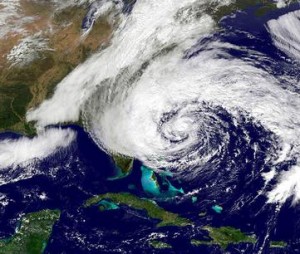As the post-Sandy clean-up and recovery continues, and the costs (both human and financial) are added up, Vince de Luca looks at what we can learn from a technology point of view - has DRaaS been proven?
Given that Sandy left an estimated eight million homes and businesses without power, flooded countless data centres and saw businesses lose out on revenues in the billions of dollars, it’s fair to say that affected companies will be looking hard at more than just recovery. They’ll be assessing how they might minimise their losses should the worst ever happen again.
For many of the affected firms, priority number one, is to look at how renewed or replaced infrastructure can be made ‘Sandy-proof’. The short answer is, it can’t. There is no viable infrastructure model that can survive total immersion in water, and total loss of power. Rather, the focus will be on finding a disaster recovery solution that can withstand all that, rather than falling victim alongside the primary systems.
Naturally, enough, attention is turning to a model that is disaster-proof in the sense that it is geographically removed from those primary systems – in other words, Disaster Recovery as a Service, or DRaaS. CIOs are looking at DRaaS with good reason – it’s now proven. Sandy proof. Throughout Sandy and the aftermath, the Logicalis Enterprise Cloud, which utilises IO's facilities, remained 100% operational.
In fact, I’d argue that DRaaS delivers four very specific benefits when it comes to withstanding Sandy-type events:
- People Power: When every second counts and business systems are down, it’s critical to have people who are able to implement the company’s DR plan so others, who are in the midst of the emergency, are free to focus on other issues that may have nothing to do with work. Knowing that there’s a team in place already taking care of it, away from the disaster zone, is an immense comfort.
- Location, Location, Location: Sandy wiped out power and communications across the entire eastern seaboard. If a company’s disaster recovery plan is in-house or even regionally based, disasters of a Sandy-like scale can render the best of DR plans ineffective. With DRaaS, however, as long as the provider has facilities in more than one region and offers failover access between facilities, the business can be up and running again in no time - even if one of the provider’s DRaaS facilities is affected.
- Price Protection: DRaaS makes disaster recovery both accessible to, and affordable for, any organisation - redundancies become the responsibility of the provider and merely an operational expense for its clients. Be sure to look for a DRaaS provider with geographically dispersed data centers that can be tied together for failover purposes. This way, when a Sandy-like event comes knocking, it won’t matter if one of the provider’s sites goes down.
- Testing, testing: There’s really no way to know if a company’s disaster recovery plan works unless it is thoroughly and regularly tested. But face it, testing DR plans for an emergency that hasn’t happened yet often takes a back seat to dealing with the very real and everyday issues that occur in a data center. With DRaaS, regular testing becomes much easier, and it is this kind of testing that ensures business-critical data will be available when and where it’s needed to keep the organisation running smoothly if disaster strikes.
The benefits of a good disaster recovery plan are clear when it comes to major, regional events like Superstorm Sandy – and DRaaS makes DR more affordable overall. So, it will be interesting to see just how many of the businesses affected eventually go with a DRaaS solution, and just how far beyond those directly affected, the lessons of Sandy are learned.

